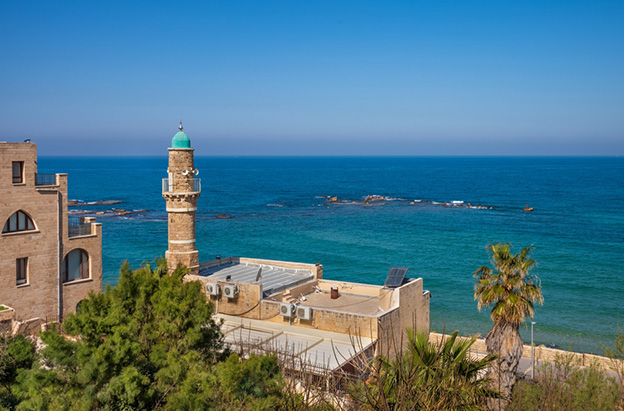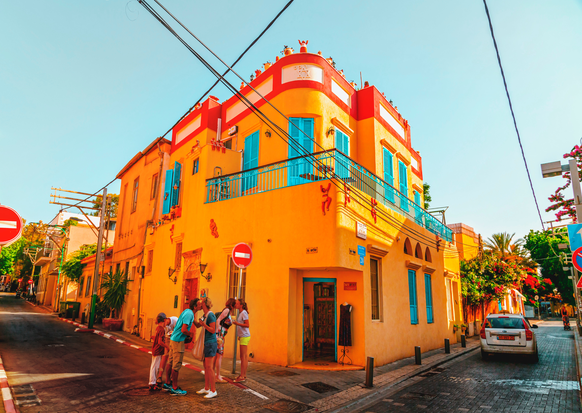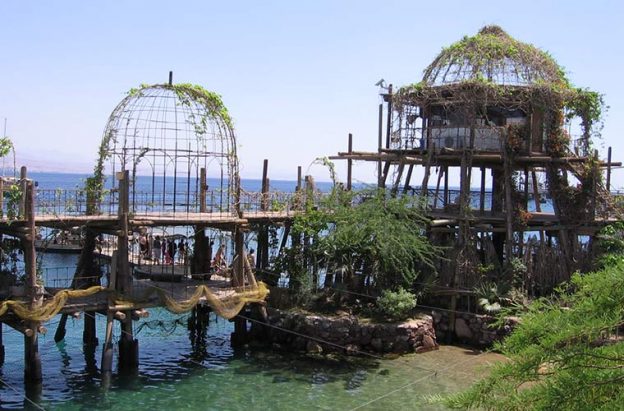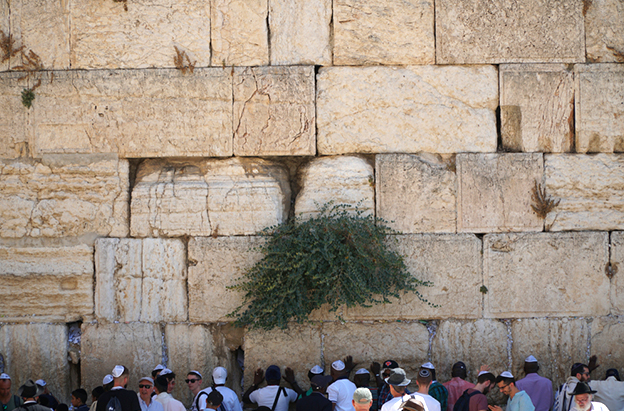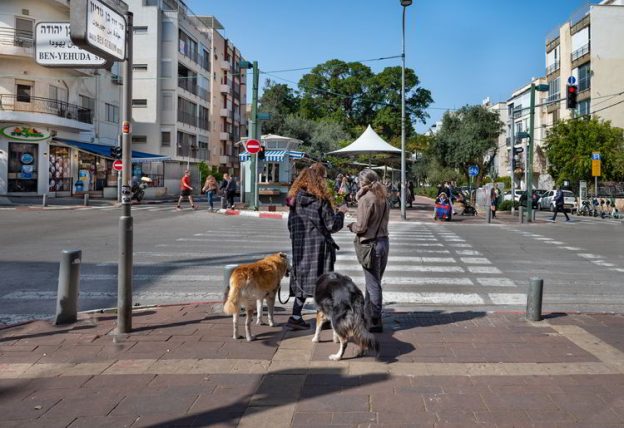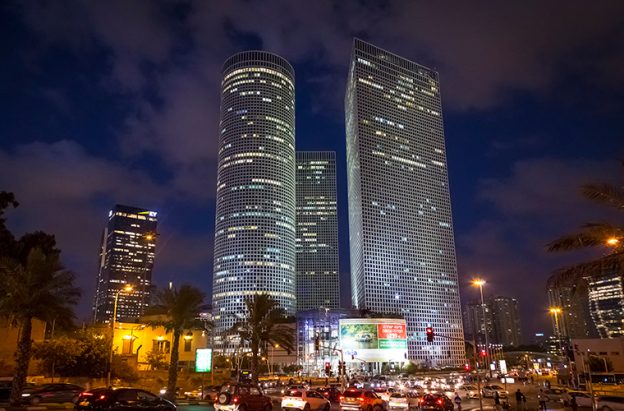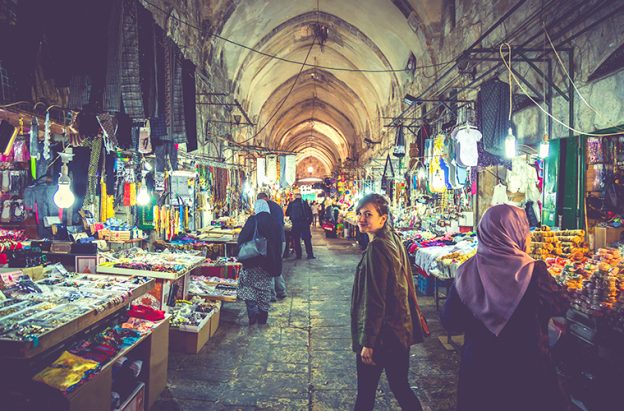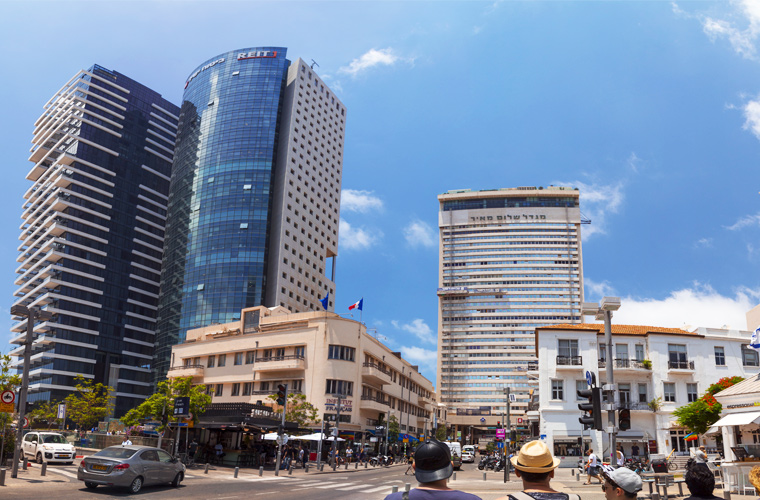From the street’s vibrant cafés and Mediterranean beaches to the tops of the Bauhaus buildings dotted around, there is no city that screams “Live life!” more than Tel Aviv. So much so, it recently left a huge imprint on singer Robbie Williams and Guns and Roses who performed concerts in the immense Hayarkon Park. Should you find yourself on a short visit to this enchanting and raucous city, we have created an itinerary packed with the city’s must-sees, so you get the best experience of two days in Tel Aviv.
With an unrivaled crop of historic and cultural attractions, first-rate Israeli, Ethiopian, and Arabic restaurants, and the diversity of music and nightlife associated with London, Paris or New York, the challenge in a short time is to narrow it down. Here, we do so, to give you a strong flavor of the city and leave with some of your own personal “Only in Israel” memories, and fortunately, the three Dan Hotels in Tel Aviv are as ideal urban landmarks as they are relaxing, luxurious getaways.
Travel Tips for Navigating Tel Aviv
With a full two-day Tel Aviv itinerary, after leaving Ben Gurion Airport, head towards the sign for the train and purchase from the automated machine a temporary RavKav, a travel card you can load and use on buses and trains while you are in town, or you can learn more and load it via the app. There are a further few apps that will serve you well: Moovit/HopOn – after setting it to Tel Aviv, this will be your godsend wherever you are, showing you bus numbers, nearby stops, train times, and live updates, enabling you to plan the best way of getting anywhere in the city, at any time; Lime/Wind – these e-scooter apps are perfect for the promenade and a fun and stress-free experience to take you from Tel Aviv Port (HaNamal) in northern Tel Aviv, all the way down to Jaffa in the south; Gett for taxis-on-demand. While WiFi is reliable everywhere, if you are roaming around and have no data plan, download and save a Google Map of the city. Rest assured, all is close by, so put on some comfortable walking shoes and get to know this incredible city.
Learn to navigate Tel Aviv like a local >>
Day 1 in Tel Aviv: From Morning Coffee to Evening Markets
Morning:
Wake up early, grab a coffee and start your day with a visit to the bustling Tel Aviv Port area, known as “HaNamal”. Take a stroll along the promenade, enjoy the sea breeze, and grab a coffee or breakfast at one of the trendy cafés overlooking the water. Close by is Secret Beach and Tel Baruch Beach, among the quieter beaches, fully equipped with green lawns, outdoor workout areas, and tranquil waves, away from the more popular central beaches. After a few hours of rest and relaxation, walk or jump on one of the many south-bound buses along Dizengoff Street, jumping off at the renowned public square, Dizengoff Square, named after the wife of the city’s first mayor. Built back in 1934 and renovated many times, the square-with-the-fountain is an outdoor hub of relaxation, a roundabout at the meeting of six streets and a perfect meeting point, spidering out to a large number of coffee shops and restaurants.
Afternoon:
Continue walking down Dizengoff Street, passing the Dizengoff Center, Israel’s first shopping mall, and turn right onto King George Street, about 15 minutes, towards the lively Carmel market. Having first opened in 1920, just over a decade after the establishment of the city, it is an integral part of the history of Tel Aviv. The top end of the Carmel Market is traditionally focused on clothing, electronics and tourist souvenirs, the lower part is mainly food and fresh produce stalls, with a walk down the narrow street a particularly special experience on Thursdays and Shabbat, which starts Fridays at sundown. A growing number of boutique stalls and eateries have sprung up in the crisscrossing alleyways, selling boutique beers, a range of halva, and a variety of international cuisines.
Evening:
Exiting the market on Allenby Street, one of the principal north-south thoroughfares, head south to explore the Florentin neighborhood, an industrial zone-turned-artist enclave and one of the popular local neighborhoods in the city. Visit the open-till-late Levinsky Market, where the exotic smells of local spices fill the air, and although smaller than the nearby Carmel Market, here you will find some great dining options to round off the day, as well as snazzy little wine bars, coffee establishments and takeaway establishments, such as Sabich Frishman, dishing up the most flavorful sabich and falafel.
Day 2 in Tel Aviv: From Ancient Jaffa to Modern Art and Cuisine
Morning:
Rejuvenated and fulfilled after day 1, put on those sneakers or pick up an e-scooter from just in front of the rainbow façade of the Dan Tel Aviv, and head south along the promenade (or “tayelet”), passing the different beaches en route to the ancient port city of Jaffa, a rich part of the city’s urban tapestry. Explore the courtyards and narrow passageways, filled with art galleries, jewelry shops, and charming cafés, visit and haggle at the famous Jaffa Flea Market, known for its antiques, vintage clothing, and unique souvenirs, and take in the panoramic views of the Mediterranean Sea and watch the fishermen at work.
Afternoon:
A 20-minute stroll from the Jaffa Flea Market, passing the Dan Panorama Tel Aviv, will bring you to Neve Tzedek, Tel Aviv’s first neighborhood. Immerse yourself in the charming atmosphere of a district known for its picturesque streets, boutiques, art galleries, Suzanne Dellal Center for Dance and Theater, and quaint streetside cafés. As you emerge from the top of Shabazi Street, make your way to the tree-lined Rothschild Boulevard. Grab an ice cream or frozen yogurt and people-watch as locals, tourists, strollers, dog-walkers, and families mix, mingle and go about their business under a lush canopy of poincianas. Pensioners relax by playing boules in the center of a busy street while a tourists relax in deckchairs reading from a street library near Habima Square at the top of this special boulevard.
Evening:
With your batteries recharged, the Tel Aviv Museum of Art is a stunning building containing an impressive collection of modern and contemporary art, including works by renowned Israeli and international artists. Open late Tuesdays and Thursdays, the museum is just a five-minute walk from the young and fresh LINK Hotel & Hub and a 15-minute walk to Sarona Market, Israel’s largest indoor culinary complex, a gourmet market and a foodie’s heaven. On 8,700 square meters, almost 100 shops of all categories, stalls and restaurants offer you some of the best local produce – fruit and vegetables from Emek Hefer and the Arava, lamb and veal from the Golan Heights, fresh fish from the Mediterranean Sea, local wines, boutique beer, chocolates and hand-made pastries.
After just two days in Tel Aviv, you will board your plane, having had your taste buds stimulated by an innovative culinary scene, brain challenged by a thriving arts and cultural scene, and heart warmed by friendly and direct locals, all leaving you wanting to come back for more.

